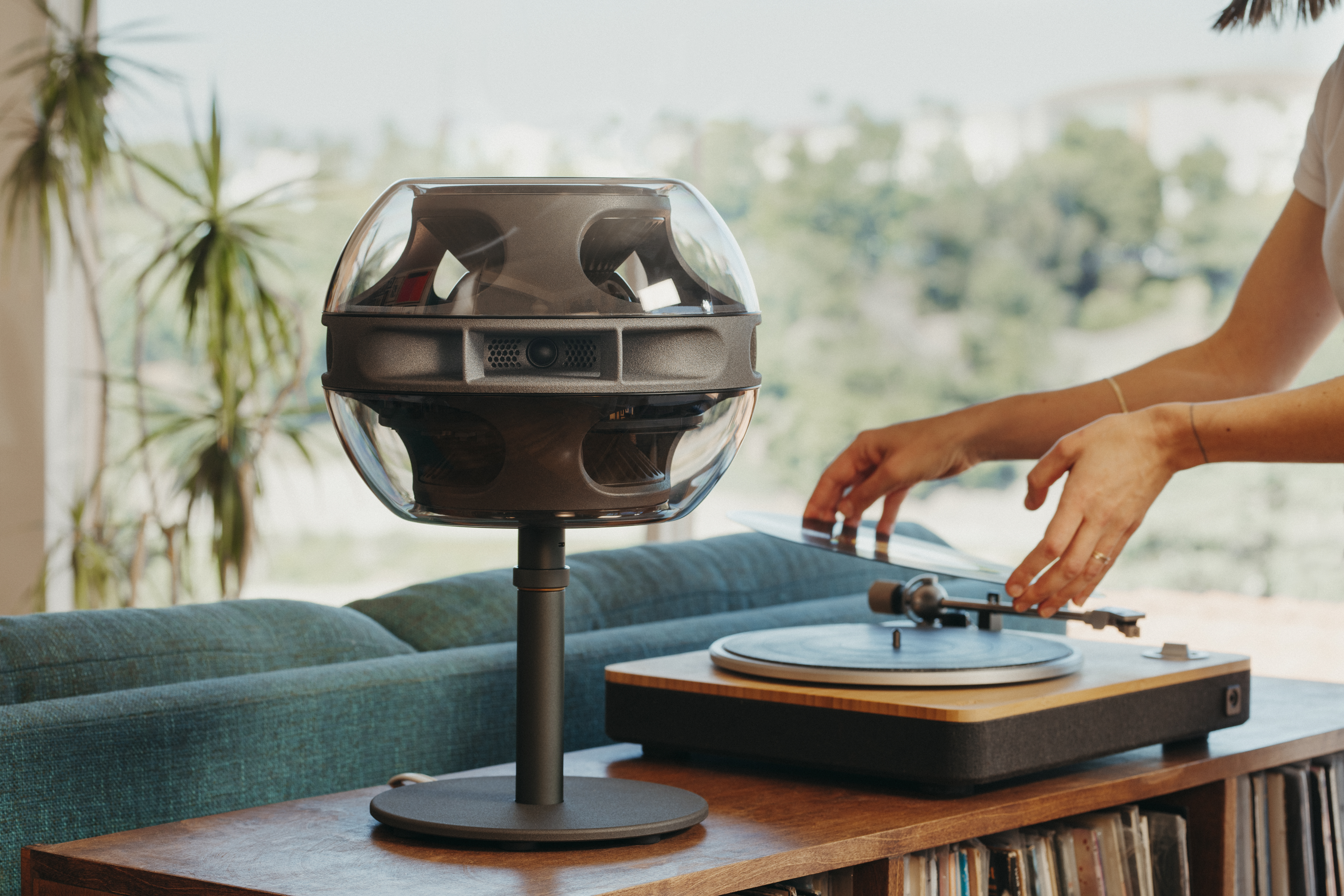Audio startup Syng has been building on quite a bit more hype than the average fresh hardware startup, largely because of the team behind it. Founder and CEO Chris Stringer was Jony Ive’s first hire at Apple and worked at the company for 21 years. In an interview, Stringer referred to the first time he heard stereo audio was “the most impressive product demo ever,” and that his company is looking to build on that wonder by building “triphonic” audio hardware that can transform the home-listening experience with spatial audio.
“It’s about transforming the stage from that stage/audience static experience that’s essentially just an image on the wall, to actually making the stage the square footage of your home,” Stringer tells TechCrunch.
Syng has closed a $48.75 million “combined” Series A from investors led by Palo Alto-based Eclipse Ventures, the startup tells TechCrunch. Other investors include Instagram co-founder Mike Krieger, Lionel Richie, and Airbnb co-founder Joe Gebbia. The company has now raised $50 million to date to build out an audio hardware startup with a hefty focus on design and advanced tech.
The company’s hardware relies on computational audio technology similar to tech that consumers have seen in products like the HomePod, which allows speakers to adjust to the spaces that they’re in. But Syng’s products are designed for spatial audio first-and-foremost. The company’s first product — the Syng Cell Alpha — is a high-end $1,799 speaker that looks like it belongs in a mid-century modern spaceship. The Apple design ethos is strong in the product which channels a bit of the Jony Ive-designed Harman Kardon SoundSticks, inside a package that Stringer says is meant to be treated more like a piece of furniture than the brutalistic tower speakers that currently carve out the ultra high-end of audio.
I haven’t gotten a chance to listen to the hardware myself, so I’ll reserve any judgments there, but while $1,799 is certainly quite pricey for a single speaker, it’s also clear that most users will not be getting the most out of the tech by buying just one. The Cell Alpha speakers are meant to interact with each other, taking in feedback while creating a dynamic soundstage for users. A big selling point of this auto-adjustment is less rigid speaker placement and the ability to let your design interests dictate where speakers are placed more than a room’s natural acoustics. This is likely only true up to a certain point, obviously, but Stringer hopes that this leads to fewer audio systems fixated around a giant TV on the wall and more people really enjoying music in their homes.

Image: Syng
The company currently supports up to 4 speakers in a single room. The Cell Alpha only comes in a single variation at the moment, but Stringer hints at future products down the road in different price points and sizes.
Getting an ultra-high-end audio setup in your home has typically meant hiring a contractor and creating a weave of complex speakers, cables, receivers, amps and universal remotes that can be an awful lot for anyone to handle. Syng’s model brings a more Sonos-like approach, treating devices more like home objects than utilitarian objects to be disguised and hidden, into the mix.
Hardware is hard — as they say — and consumer audio can be an especially difficult place to play as a newcomer. Legacy is more important in internet-connected audio than most other realms of hardware, as people can often keep premium home audio products running for decades — or at least much longer than other tech devices. Betting on the reliability of a lifetime of firmware updates for a new startup can be a tricky bet for consumers, especially with a price tag like the Cell Alpha’s. Another challenge for the startup is that most users have scant options for playing spatial audio, most music streaming services barely support it. As executive Chris Stringer notes, this likely won’t be the case for long as major players like Apple start pushing the technology more aggressively, but hardware startups and market timing have always had a complicated relationship.
Other investors in the startup include Bridford Group, SIP Global Partners, Renegade Partners, Animal Capital, Schusterman Family Investments, Vince Zampella and Alex Rigopolous. Stringer says the funding will be used for R&D around the company’s future hardware and software products.
Source Link Ex-Apple designer’s ultra-premium audio hardware startup Syng raises $48.75 million
Leave a Reply